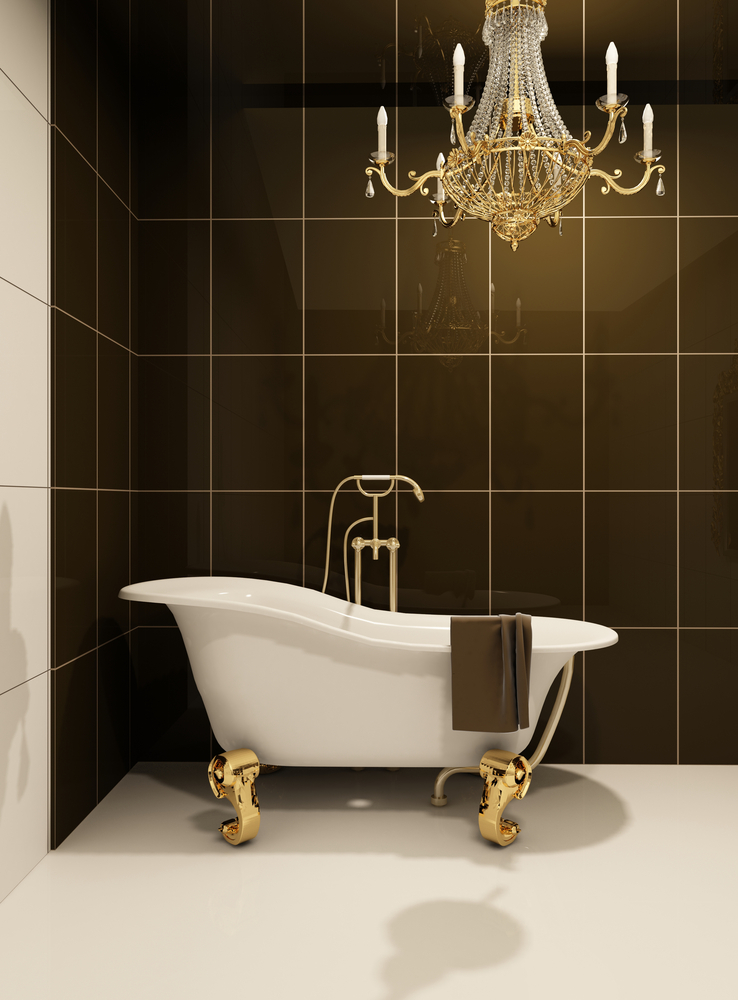Bathroom Lighting

19 February
Bathroom Lighting
19 February
 Bathroom Lighting should be carefully considered and regarded as one of the most important spaces in a home when it comes to lighting. We spend a lot of time in the bathroom and whether we are doing our make-up, shaving, or having a relaxing bath there are all different types of lighting needs.
Bathroom Lighting should be carefully considered and regarded as one of the most important spaces in a home when it comes to lighting. We spend a lot of time in the bathroom and whether we are doing our make-up, shaving, or having a relaxing bath there are all different types of lighting needs.
Vanity Lights are an important Lighting fixture for any bathroom and can instantly provide much needed light for those tricky tasks such as applying make-up or shaving. These daily tasks can be executed in a much easier and safer way by having the proper lighting. Vanity lights are placed on either side of a mirror (usually situated above the basin) and/or above the mirror providing ample amount of light. Vanity lights also provide not only task lighting but general lighting for a bathroom depending on the lighting fixture and size of the space. Lights2you has a wide rang of vanity lights, available in many different styles and sizes to suit all types of bathrooms.
Another popular lighting option for any bathroom is a 3 in 1 Bathroom Heat & Exhaust Fan. The 3 in 1 lighting fixtures feature a light, heat lamps, and an exhaust fan which makes them a well rounded multi-purpose bathroom light. Getting out of a hot shower in winter can make a bathroom seen freezing, but with a heat light you will feel as warm as toast and the transition out of the shower will be pain free. 3 in 1 Bathroom Heat and Exhaust lights are available in multiple sizes and styles and now there is a new LED version available. For those of you who want to get creative with your bathroom lighting, try hanging a Crystal Chandelier. This will add a glamorous and expensive feel to your bathroom, which will help transform the space into a stunning sanctuary. Crystal Chandeliers have become increasingly popular over the last few years and are being fashionably used in unconventional places such as bathrooms and walk in wardrobes. All light fittings (except DIY) should be installed by a licensed electrician, so simply ask your electrician for their recommendation on the placement of this chandelier.
For those of you who want to get creative with your bathroom lighting, try hanging a Crystal Chandelier. This will add a glamorous and expensive feel to your bathroom, which will help transform the space into a stunning sanctuary. Crystal Chandeliers have become increasingly popular over the last few years and are being fashionably used in unconventional places such as bathrooms and walk in wardrobes. All light fittings (except DIY) should be installed by a licensed electrician, so simply ask your electrician for their recommendation on the placement of this chandelier.
There is a general assumption that bathroom lights should have an IP66 rating, and in some instances this is not the case. Below is a diagram of a standard bathroom, which highlights in blue the areas that should have IP66 rated Lights and the areas that are not highlighted only require the lights to be IP44 rated. It is always best to consult with your electrician on the placement of Light fittings in a bathroom, however this is a simple guide to help you choose which lights to use in your bathroom and whether you require them to be IP66 rated or not.

